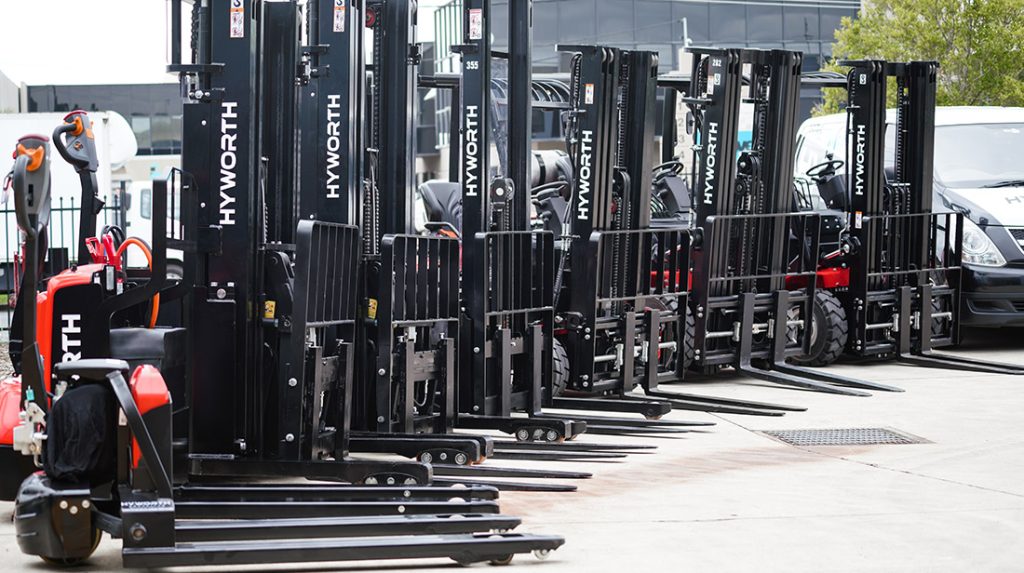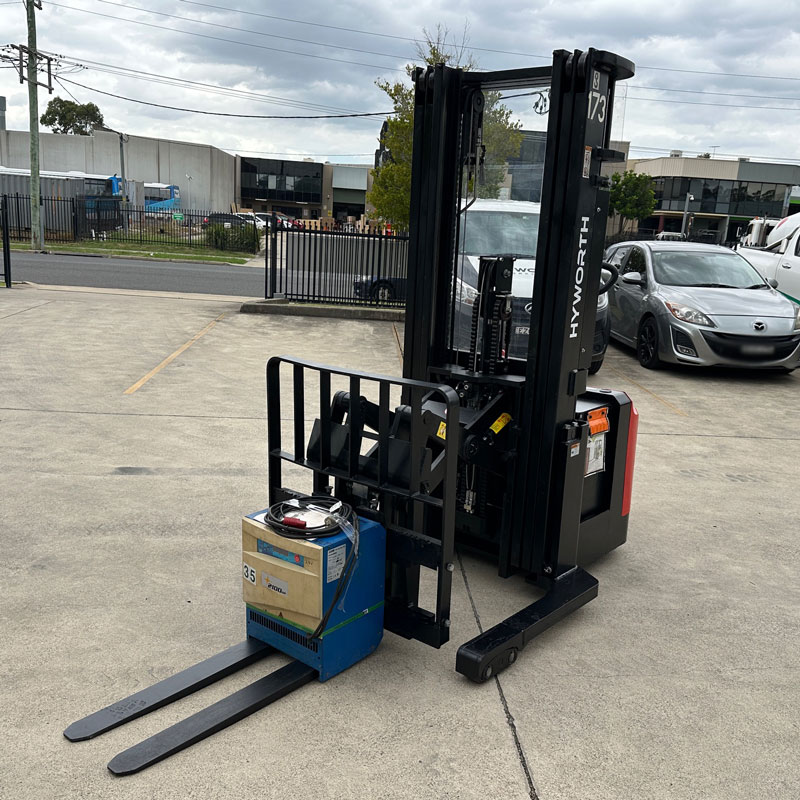
In the industrial landscape, forklifts are the unsung heroes, tirelessly moving goods and materials across warehouses, construction sites, and distribution centres. They are the backbone of many operations, ensuring that everything runs smoothly and efficiently. But what if you could make these workhorses even more versatile and productive? That’s where forklift attachments come into play. These ingenious tools transform a standard forklift into a multi-functional machine, capable of handling a diverse range of tasks with ease and precision.
This blog post will delve into the world of forklift attachments, highlighting 10 must-have options that can significantly boost your operational efficiency and safety. We’ll explore what each attachment does, when to use it, and how it can help you get the most out of your forklift fleet. Whether you’re looking to streamline your material handling processes or enhance workplace safety, understanding these attachments is a crucial step towards optimising your operations.
What are forklift attachments?
Simply put, forklift attachments are specialised tools that can be easily fitted to the front carriage of a forklift, replacing or complementing the standard forks. Their primary purpose is to expand the forklift’s capabilities beyond basic pallet lifting. From handling unique loads like paper rolls or drums to providing elevated access for maintenance, these attachments are designed to adapt your forklift to specific tasks, making it a more versatile and indispensable asset in your operations. They are engineered to integrate seamlessly with your existing equipment, ensuring a secure and efficient connection.
Benefits of using forklift attachments
The advantages of incorporating the right forklift attachments into your operations are numerous and impactful. Firstly, they lead to a significant increase in efficiency and productivity. By enabling your forklifts to perform a wider array of tasks, you reduce the need for specialised machinery or manual labour, saving valuable time and resources. Secondly, attachments play a vital role in enhanced safety. Many attachments are designed to securely handle awkward or unstable loads, minimising the risk of accidents, product damage, and injuries to your workforce. This, in turn, leads to reduced manual labour and a decrease in costly product damage.
Furthermore, investing in forklift attachments can be incredibly cost-effective. Instead of purchasing multiple single-purpose machines, you can equip your existing forklift with various attachments, effectively turning one piece of equipment into many. This not only saves on upfront capital expenditure but also reduces maintenance costs and storage space. Ultimately, attachments empower your team to work smarter, safer, and more productively, contributing directly to your bottom line.
10 must-have forklift attachments and when to use them
Now, let’s explore some of the most valuable forklift attachments that can revolutionise your material handling operations:
1. Fork extensions
What they are: These are sleeves that slide over your existing forklift forks, providing additional length. They are typically made from high-strength steel and are easy to install and remove.
When to use them: Fork extensions are indispensable when you need to handle loads that are longer or wider than your standard forks can accommodate. Think about moving large pipes, lengthy timber, or oversized pallets. They ensure the load is adequately supported, preventing tipping and damage, and significantly improve stability during transport. This is particularly useful in industries like construction, timber yards, and manufacturing, where long materials are common.
2. Side shifters
What they are: A side shifter allows the forklift operator to move the forks and the load horizontally from side to side without repositioning the entire forklift. This hydraulic attachment is integrated into the forklift carriage.
When to use them: Side shifters are a game-changer for precision and efficiency, especially in confined spaces. They are ideal for accurately positioning loads onto racks, into trucks, or alongside other materials. This attachment reduces the need for constant forward and backwards adjustments of the forklift, saving time and reducing potential damage to goods or racking. Warehouses, distribution centres, and loading docks benefit immensely from side shifters, as they enhance productivity and minimise operator fatigue.
3. Fork positioners
What they are: Fork positioners allow the operator to hydraulically adjust the distance between the forks from within the cabin. This eliminates the need for manual adjustment, which can be time-consuming and hazardous.
When to use them: If your operation involves handling pallets of varying widths frequently, a fork positioner is a must-have. It enables quick and precise adjustment of the fork spacing to match different pallet sizes, ensuring a secure and balanced lift every time. This attachment is invaluable in high-volume environments like logistics, manufacturing, and freight handling, where efficiency and safety are paramount. It also reduces wear and tear on the forks and pallets by ensuring proper engagement.
4. Paper roll clamps
What they are: These specialised clamps are designed to securely grip and transport large, heavy rolls of paper without damaging their delicate surfaces. They feature curved, padded arms that distribute pressure evenly across the roll.
When to use them: Paper roll clamps are essential for industries dealing with large paper products, such as printing, paper manufacturing, and newsprint distribution. They allow for both horizontal and vertical handling of rolls, ensuring safe and efficient movement from storage to processing. Using these clamps prevents costly damage to the paper, which can occur with traditional forks, making them an indispensable tool for maintaining product integrity.
5. Drum clamps
What they are: Drum clamps are attachments specifically designed to lift, transport, and stack drums and barrels. They come in various configurations, capable of handling one or multiple drums at a time, typically by gripping the rim or body of the drum.
When to use them: If your operations involve handling liquids, chemicals, or other materials stored in drums, a drum clamp is crucial for safety and efficiency. They eliminate the need for pallets, allowing for direct handling and stacking of drums. Industries such as chemical manufacturing, oil and gas, and food processing frequently utilise drum clamps to safely manage their inventory. These clamps ensure stability during transport, preventing spills and accidents.
6. Bale clamps (or carton clamps)
What they are: These clamps are designed to handle non-palletised loads such as bales of cotton, wool, recycled materials, or large stacks of cartons. They feature wide, flat arms that apply even pressure to secure the load.
When to use them: Bale clamps are ideal for industries that deal with compressed materials or large volumes of boxed goods without pallets. This includes recycling centres, textile industries, and certain warehousing operations. By eliminating the need for pallets, they optimise storage space and reduce handling time. Carton clamps, a variation, are perfect for handling white goods or large appliances, ensuring they are moved without damage.
7. Rotators
What they are: A rotator attachment allows the forklift forks or a specialised clamping device to rotate 360 degrees, enabling the operator to invert or empty containers and bins.
When to use them: Rotators are incredibly useful in applications where materials need to be dumped or inverted, such as in waste management, agricultural settings for emptying produce bins, or manufacturing processes where components need to be precisely positioned. They enhance efficiency by automating the emptying process and improve safety by keeping operators away from hazardous manual handling tasks. This attachment is a versatile solution for bulk material handling.
8. Work platforms/man baskets
What they are: These are secure, cage-like platforms that attach to the forklift forks, designed to safely elevate personnel for tasks that require working at height. They typically include safety rails and anchor points for harnesses.
When to use them: Work platforms are essential for tasks like elevated maintenance, inventory checks in high racking, lighting repairs, or any job requiring safe access to elevated areas within a warehouse or facility. They provide a stable and secure environment for workers, significantly reducing the risks associated with ladders or makeshift solutions. Always ensure compliance with safety regulations when using these attachments, and that the forklift operator is properly trained and certified.
9. Carpet poles
What they are: A long, sturdy pole that extends from the forklift carriage, designed to be inserted into the core of rolled goods.
When to use them: Carpet poles are specifically designed for handling large, rolled items such as carpets, linoleum, or coils of wire. They allow for easy and efficient loading, unloading, and transportation of these awkward and heavy items, preventing damage that might occur if handled with standard forks. This attachment is a staple in flooring warehouses, textile mills, and any business dealing with large rolled materials.
10. Load backrests
What they are: A vertical extension of the forklift carriage, typically a sturdy metal frame, that extends upwards from the forks.
When to use them: Load backrests are a fundamental safety attachment, often overlooked but critically important. They prevent loads from shifting backwards towards the mast and operator, especially when handling tall or unstable stacks. They also protect the forklift mast and hydraulic components from damage caused by shifting loads. While not directly involved in lifting, they provide crucial stability and protection, making them essential for nearly all forklift operations, particularly in warehousing and logistics, where loads are frequently stacked high.
Choosing the right forklift attachment
Selecting the appropriate forklift attachment is crucial for optimising your operations and ensuring safety. It’s not a one-size-fits-all solution; rather, it requires careful consideration of several factors. Firstly, you must consider the type, weight, and dimensions of the loads you will be handling. An attachment designed for light cartons won’t be suitable for heavy machinery components. Secondly, assess your operational environment and specific tasks. Are you working in tight aisles, or do you need to reach high shelves? Do you frequently load and unload trucks, or are you primarily stacking in a warehouse? Each scenario might call for a different attachment.
Finally, and perhaps most importantly, consult with experts like the team at Hyworth Forklifts. Our extensive knowledge of forklift attachments and their applications can guide you in making the best decision for your specific needs. We can help you understand load capacities, compatibility with your existing forklift fleet, and any necessary modifications. Making an informed choice ensures maximum efficiency, safety, and return on your investment.

Safety Considerations
While forklift attachments significantly enhance productivity, their safe operation is paramount. Proper training and adherence to safety guidelines are non-negotiable. Operators must be thoroughly trained on how to correctly attach, operate, and maintain each specific attachment. This includes understanding load limits, centre of gravity changes, and safe operating procedures. Regular refresher training is also highly recommended.
Furthermore, regular maintenance and inspections of both the forklift and its attachments are essential. Worn or damaged attachments can compromise safety and lead to accidents. Always perform pre-operation checks and ensure that all components are in good working order. Adhering to manufacturer guidelines and industry best practices, such as those outlined by Safe Work Australia, will help ensure a safe working environment for everyone.
Conclusion
Forklift attachments are more than just accessories; they are powerful tools that unlock the full potential of your forklift fleet. By enabling your machines to perform a wider range of tasks with greater efficiency and safety, they contribute directly to your operational success. From handling delicate paper rolls to managing heavy drums, the right attachment can transform your material handling processes, saving you time, reducing costs, and enhancing workplace safety.
Ready to boost your efficiency and maximise the versatility of your forklifts? Contact the experts at Hyworth Forklifts today. Whether you’re looking to purchase new forklift attachments or need advice on the best solutions for your business, our team is ready to assist. Explore our range of forklifts for sale, or consider our flexible hire options for temporary needs. Let Hyworth Forklifts help you find the perfect match for your operational requirements.